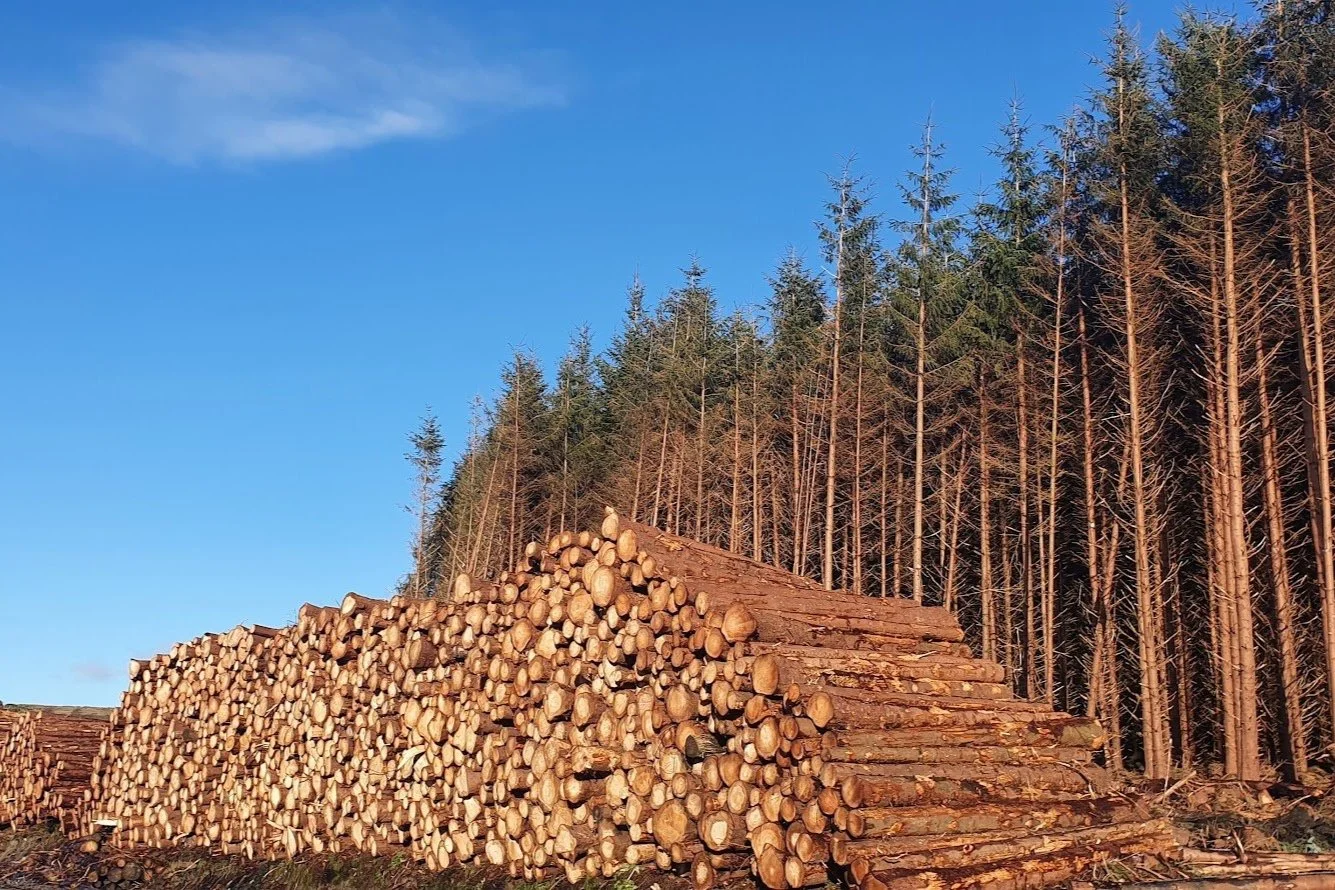Thoughts on Recent Developments in Irish Forestry
We have been asked a lot in the last week to respond to the news regarding Coillte's re-entrance to the forestry creation space. It is a big story and there is nuance and complexity involved, but essentially it will see the semi-state forestry company Coillte facilitate the purchase of 123,000 acres of land in Ireland on behalf of international investment funds.
Coillte will manage this land on an ongoing basis, growing crops of productive coniferous trees.The investment company will receive fifteen years of state premiums and own the land as well as the timber at the end of the deal.
To briefly give a little context to the story, Ireland has around 12% of its land area forested. Most of this is commercial conifer crops, grown and harvested for wood products. Coillte owns around half of these forests and private landowners, mostly farmers, own the remainder. Coillte ceased creating new forests around thirty years ago, after a change in state aid rules saw them unable to benefit from ongoing payments.
The state has been attempting to encourage farmers to plant since. There was great success in early years with as many as 15,000 new hectares planted by farmers in 2001. Since then, Ireland has experienced a steady decline in afforestation. Recent issues with licenses for planting and felling have exacerbated the decline, and eroded confidence in forestry as a land use in the eyes of many farmers. It is worth remembering, it is a big deal for a farmer to commit land farmed for generations into permanent woodland. There is no going back.
Declining trend in private planting can be seen in red.
Carbon Targets
Trees sequester atmospheric carbon and creating new forestry has become a cornerstone of Ireland's climate strategy. Trees are required to balance out emissions from agriculture and industry (although whether they do that under the current management system is another story for another day).
Estimates suggest Ireland needs to plant 16,000 hectares a year in order to meet its climate obligations. Last year just 2000 hectares were planted.
Coillte have found international investment partners willing to buy land and plant forests, which Coillte will manage for a fee.
Unfortunately, there are downsides to the deal. Land will move permanently from working families to investors. As well as this, the scale of the project will put upward pressure on land prices making it harder for local farmers or conservation initiatives to compete financially. Also, as investors will be looking for maximum financial returns, sites will likely be planted with fast growing conifers, primarily sitka spruce and will be managed intensively.
At Hometree, we don’t have an ideological objection to commercial forestry. Done right it can serve as a significant public good but we do believe the beneficiaries of it should be the Irish people, be it through individual, local business, not-for-profit, cooperative, or state ownership.
Advocates for more investment fund ownership would say that this model is more efficient and better able to manage the scale and the complexity of forestry than farmers, but this need not be the case and there are alternatives. The Irish dairy sector is a good example of an alternative model. Despite all the criticism the dairy sector gets, one thing it has done remarkably well is retaining value for the primary producer i.e the farmers through Co-operatives. The co-ops manage the processing of the product, find markets for it, and pay producers a reasonable price. This allows thousands of dairy families to earn a good wage, which allows them to support their family and local community. We should all acknowledge this is a good thing. It is by no means the case in other primary production sectors such as beef, horticulture or egg production.
We can only assume that the government accepts Coillte’s unorthodox approach to afforestation as it helps to move the state closer to its the all important climate targets. There are few other obvious benefits. The state's potential to benefit financially is negligible. In 2021 Coillte total remittance was just €30 million.
In many ways, this type of commercial venture and the associated forestry type has very little to do with Hometrees model, which is primarily focused on ecological restoration and community engagement, but it does pose questions about land ownership and social license.
We believe there is room for a diverse mixture of models. Each has its strengths and drawbacks. However, we feel that using a state body to facilitate the movement of land from working people to investors in the midst of a biodiversity and climate crisis, is an inappropriate use of Coillte's significant organisational capacity. It also goes against the principles of a just transition. As the state's largest single landholder (7%) they could be a profound force for good. In many ways much of the frustration is misdirected at Coillte. They are just fulfilling the brief given to them by the government; to turn a profit on behalf of the state. If the public want to see change they must put pressure on the government to give Coillte a new brief.
In terms of realising Ireland’s climate and biodiversity targets, the state’s first priority must be supporting existing landowners, and to be fair the new forestry premia should make a big difference. However it's not all about money. As previously mentioned, forestry is a very significant decision for farmers to make. At Hometree we have shown through our work with farmers that they are open to woodland creation, but they need support.
Ultimately, we believe that land and the benefits that go with it, should be kept as close to local communities as possible. If you also have concerns about this development, contact your local TD.
If you are interested in supporting alternative methods to woodland creation in Ireland, please follow this link.
Thank you for reading.




